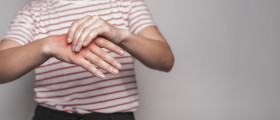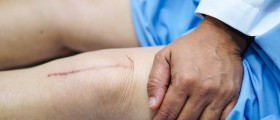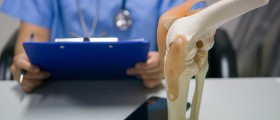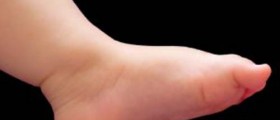
Syndactyly
Syndactyly is a medical condition that features with partial or total fusion of two or more fingers. Together with polydactyly syndactyly represents one of the most frequent variations on the basic growth patterns of the hand. Complete syndactyly means that the fingers are totally joined together. On the other side, incomplete syndactyly features with partial fusion of the affected fingers. The process of fusion can only affect the skin and underlying connective tissue or in some cases even bones and joints of the hand can be fused. This is what determinates the type of the surgery which is going to be performed. The surgery is the only treatment modality that can achieve separation of the fused fingers.
Causes of Syndactyly
Syndactyly occurs as a consequence of the improper intrauterine growth and development of the hands. During the development and growth of the fingers they eventually have to separate one from another. In syndactyly this process is somehow affected and the person ends up with fused fingers. The problem may be connected to genes. However, the scientists have not found exact cause of syndactyly yet.
Surgery for Syndactyly
The goal of surgical procedure is to separate the affected fingers and to maintain their function. Additionally, the surgery also has to fulfill certain aesthetic requires.
During the surgical procedure the surgeon performs zigzag cuts. These cuts will help in healing of the wounds and preserve the function of the fingers. Furthermore, this way of operating prevents certain complications which may develop during growth of the fingers in children.
In some patients skin grafts can provide with sufficient amount of skin necessary for desirable preservation of the function and appearance of the fingers. Additional skin is taken from other parts of the body.
If syndactyly includes fusion of the bones and joints the surgery is more complex. The surgeon has to take care of bones, nerves and blood vessels and preserve function of the joints as much as possible.
In some children there is need for so called 'touch up' surgery in their adulthood. This type of surgery will correct any remaining functional or aesthetic problems.
After the surgery a hand therapist will work with a child. A child needs to use special silicone rubber spacer, which will separate the operated fingers. This aid is used during sleep.
It is best if the surgery is performed within few years of child's life. This way further growth and development of the fingers is not jeopardized. The child will establish proper function of the fingers early and be able to maintain it.














-Symptoms,-Diagnosis,-Treatment_f_280x120.jpg)


Your thoughts on this
Loading...